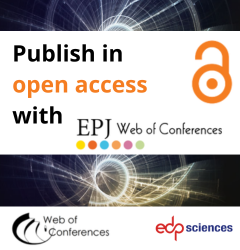Home / Conference Listings / Physics / X-rays, Synchrotron Radiation and Crystallography / United States
Conferences > Physics > X-rays, Synchrotron Radiation and Crystallography > United States
Select a location
United States
1
DXC 2023 — 2023 Denver X-ray Conference
07 Aug 2023 - 11 Aug 2023 • Lombard, Illinois, United States
Event listing ID:
1478083
Event website:
Conference-Service.com offers, as part of its business activities, a directory of upcoming scientific and technical meetings. The calendar is published for the convenience of conference participants and we strive to support conference organisers who need to publish their upcoming events. Although great care is being taken to ensure the correctness of all entries, we cannot accept any liability that may arise from the presence, absence or incorrectness of any particular information on this website. Always check with the meeting organiser before making arrangements to participate in an event!
No tracking | No pop-ups | No animations
Last updated: 21 March 2022



